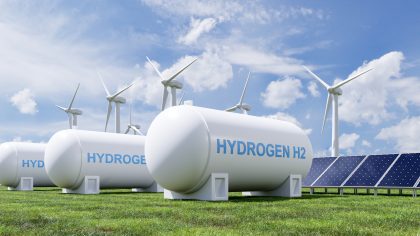All information in the datasheets is also available in ESDL (Energy System Description Language). You can find them in the Energy Data Repository (EDR).
Electricity network low-voltage
A low-voltage network (LV) is part of the distribution system that carries electric energy to end-consumers. The LV networks start from the output side of the MV-LV transformers. The transformers directly feed the different loads, thus constituting the last step in distributing electricity. The voltages used are 220/127 V and 380/220 V, which is regularly equal to the voltage of electric appliances.
The topology of these networks depends on the operation voltage, amount of required phases (3 or 1) and the required reliability. The electrical cables can be overhead lines, underground or a mix of both.
Downloads
Electricity network low-voltageGerelateerde publicaties

Effecten van waterstofimport op de industrie in Nederland
Exploration of the effects of (partially) replacing Dutch fertiliser and iron and steel production with imports

De weg naar toekomstbestendige petrochemie
Exploration of transition strategies in Dutch refineries and organic chemicals industry for climate policy

Toename aandeel hernieuwbare warmte
Haalbaarheid van de RED III-doelstellingen met het huidige beleid